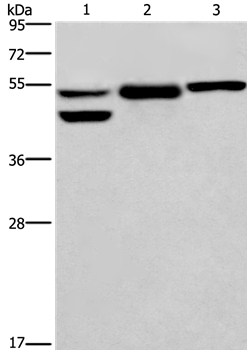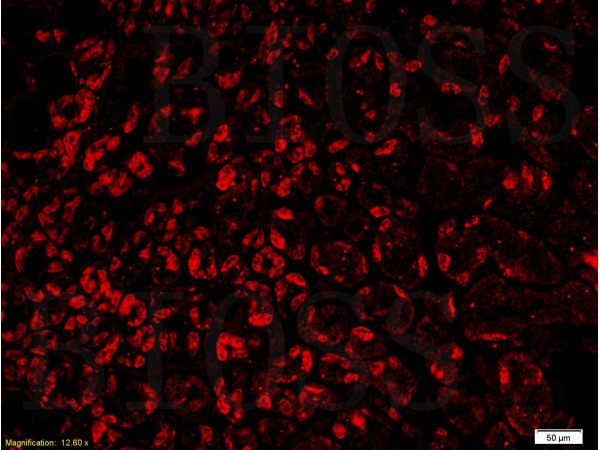GPR30 antibody [C2C3], C-term
GTX107748
ApplicationsImmunoFluorescence, Western Blot, ImmunoCytoChemistry, ImmunoHistoChemistry, ImmunoHistoChemistry Frozen, ImmunoHistoChemistry Paraffin
Product group Antibodies
TargetGPER1
Overview
- SupplierGeneTex
- Product NameGPR30 antibody [C2C3], C-term
- Delivery Days Customer9
- Application Supplier NoteWB: 1:500-1:3000. ICC/IF: 1:100-1:1000. IHC-P: 1:100-1:1000. *Optimal dilutions/concentrations should be determined by the researcher.Not tested in other applications.
- ApplicationsImmunoFluorescence, Western Blot, ImmunoCytoChemistry, ImmunoHistoChemistry, ImmunoHistoChemistry Frozen, ImmunoHistoChemistry Paraffin
- CertificationResearch Use Only
- ClonalityPolyclonal
- Concentration1.53 mg/ml
- ConjugateUnconjugated
- Gene ID2852
- Target nameGPER1
- Target descriptionG protein-coupled estrogen receptor 1
- Target synonymsCEPR, CMKRL2, DRY12, FEG-1, GPCR-Br, GPER, GPR30, LERGU, LERGU2, LyGPR, mER, G-protein coupled estrogen receptor 1, G protein-coupled receptor 30, IL8-related receptor DRY12, chemoattractant receptor-like 2, chemokine receptor-like 2, constitutively expressed peptide-like receptor, flow-induced endothelial G-protein coupled receptor 1, heptahelix receptor, lymphocyte-derived G-protein coupled receptor, membrane estrogen receptor
- HostRabbit
- IsotypeIgG
- Protein IDQ99527
- Protein NameG-protein coupled estrogen receptor 1
- Scientific DescriptionThis gene is a member of the G-protein coupled receptor 1 family and encodes a multi-pass membrane protein that localizes to the endoplasmic reticulum. The protein binds estrogen, resulting in intracellular calcium mobilization and synthesis of phosphatidylinositol 3,4,5-trisphosphate in the nucleus. This protein therefore plays a role in the rapid nongenomic signaling events widely observed following stimulation of cells and tissues with estrogen. Alternate transcriptional splice variants which encode the same protein have been characterized. [provided by RefSeq]
- Storage Instruction-20°C or -80°C,2°C to 8°C
- UNSPSC12352203
References
- Activation of G protein coupled estrogen receptor prevents chemotherapy-induced intestinal mucositis by inhibiting the DNA damage in crypt cell in an extracellular signal-regulated kinase 1- and 2- dependent manner. Chen G et al., 2021 Oct 30, Cell Death DisRead more
- Activation of the G Protein-Coupled Estrogen Receptor Prevented the Development of Acute Colitis by Protecting the Crypt Cell. Wang Q et al., 2021 Feb, J Pharmacol Exp TherRead more
- Estrogen receptor signaling in the ferutinin-induced osteoblastic differentiation of human amniotic fluid stem cells. Zavatti M et al., 2016 Nov 1, Life SciRead more
- Estradiol rapidly modulates odor responses in mouse vomeronasal sensory neurons. Cherian S et al., 2014 Jun 6, NeuroscienceRead more
- Estradiol and tamoxifen induce cell migration through GPR30 and activation of focal adhesion kinase (FAK) in endometrial cancers with low or without nuclear estrogen receptor alpha (ERalpha). Tsai CL et al., 2013, PLoS OneRead more







